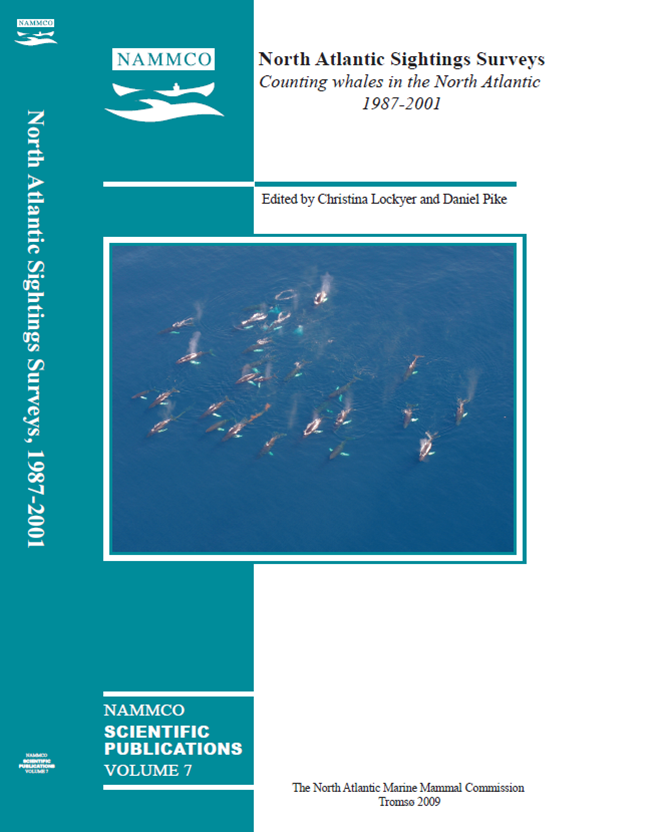Density surface fitting to estimate the abundance of humpback whales based on the NASS-95 and NASS- 2001 aerial and shipboard surveys
DOI:
https://doi.org/10.7557/3.2711Keywords:
abundance, humpback whales, surveys, densityAbstract
Generalized additive models (GAMs) with spatially referenced covariates were fitted to data collected during the 1995 and 2001 Icelandic (shipboard and aerial) and Faroese (shipboard only) components of the North Atlantic Sightings Surveys (NASS-95 and NASS-2001). The shipboard surveys extended from the east coast of Greenland, around Iceland, down to an area along the west coast ofIreland (in 1995) and to the north of the United Kingdom (in 2001). In contrast, the aerial surveys were limited to Icelandic coastal waters only. The aim of the analysis was to predict density, and hence abundance, of humpback whales throughout the survey regions and also to establish if there was any evidence that humpback whale density was related to sea surface temperature or depth.Fitting GAMs to the 1995 data proved problematic and so various subsets of the data were used in an attempt to improve the model fitting. Such difficulties did not occur with the 2001 data. Confidence intervals (CIs) for the abundance estimates were estimated using bootstrap sampling methods.
The estimated humpback whale abundance for the region covered by the aerial and shipboard surveys in 1995 was 10,521 (95% CI: 3,716–24,636) using all available data and 7,625 (3,641–22,424) if survey blocks with 0 sightings around the Faroes and south of 60˚ N where no humpback whales were detected were excluded from the analysis. The estimate for the total survey region in 2001 was 14,662 (9,441–29,879). The high upper bounds of the confidence intervals were thought to be caused by a paucity of effort over wide areas of the survey leading to interpolation. Overall, the uncertainty associated with these abundance estimates was approximately equal to, or greater than, that associated with a stratified distance analysis. Given these wide CIs the evidence for a substantial difference in abundance between years was equivocal. However there was evidence to suggest that humpback whales congregated in shallower waters between 6–8˚C.
Downloads
Published
2009-09-01
How to Cite
Paxton, C. G., Burt, M. L., Hedley, S. L., Víkingsson, G. A., Gunnlaugsson, T., & Desportes, G. (2009). Density surface fitting to estimate the abundance of humpback whales based on the NASS-95 and NASS- 2001 aerial and shipboard surveys. NAMMCO Scientific Publications, 7, 143–160. https://doi.org/10.7557/3.2711
Issue
Section
Articles





